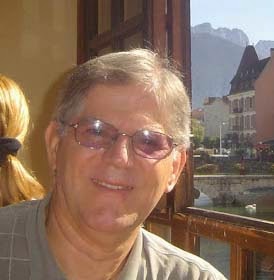by Tom Kando
The basic difference between my conservative friends and myself is that they all subscribe to maximum economic freedom, that is: classical liberalism. Here is a quick list of the chief “markers” of classical liberalism and American-style capitalism:
● The foundation of classical free-market economic theory was laid by Adam Smith (1723-1790).
● One metaphor used by Smith was that of the “invisible hand:” He used this image to describe the self-regulating behavior of the marketplace.
● According to classical liberal theory, the economy that works best is the economy that is left unregulated. To express this, classical liberals such as Adam Smith adopted the expression “laissez-faire” from earlier French economists with similar views.
● By the early and mid 20th century, classical liberal economics were mostly associated with the so-called Austrian school, notably Ludwig von Mises (1881-1973) and Friedrich Hayek (1899-1992). The baton was then transferred to American economist Milton Friedman (1912-2006) and his disciple Alan Greenspan (1926- ), who served as chair of the Federal Reserve from 1987 to 2006.
The Global Financial Crisis that began in 2007 and caused economic problems from which we have yet to fully emerge, can be attributed to the excesses of classical liberalism that culminated under Greenspan’s watch.
Greenspan conveniently retired a year before the collapse he helped cause with his extreme laissez-faire policies and his opposition to economic regulation. I read Greenspan’s book, “The Age of Turbulence” on a flight to Europe in 2007. The book had just come out, it was a No. 1 New York Times Bestseller, it was widely praised, and summarized on the back flap as a “magnificent tour d’horizon of the global economy.” This just months before all hell broke loose! You’d think of this as a major embarrassment for Greenspan, right? But no, such people never have to apologize. They never have to admit that they were wrong, even after they cause the world to lose half of its wealth.
● In addition, during the past forty years or so, classical liberalism has walked hand in hand with neo-conservatism. This is the political movement which culminated in the George W. Bush administration, which undertook its disastrous Middle-Eastern wars and ruinous nation building programs urged on by neo-cons such as Paul Wolfowitz.
In sum, we have classical liberalism and neo-conservatism to thank for the current bankrupt garrison state, our run-away surveillance society, the polarization of wealth and retrogression on all fronts.
Now let me explain to you why classical liberal economic theory - call it laissez-faire, call it the invisible hand, call it the free market, call it the law of supply and demand - is basically wrong. This theory is good at maximizing the businessman’s profit, and terrible at improving the consumer’s quality of life.
My explanation relies on the following simple axiom: THE BAD DRIVES OUT THE GOOD.
The classical liberal theory says that if you let supply and demand rule the economy, all will be for the best, because supply will automatically be determined by demand. Whatever many people WANT will be produced, because it will be lucrative to do so, and vice-versa. For example, if fewer and fewer people want to buy horse buggies, then the few horse buggies that are still around will become worthless, and no businessman in his right mind will start a horse buggy factory.
But here is where this theory goes astray:
The single most significant contributor to demand is COST: the cheaper a product is, ceteris paribus,
the more it will sell. 9-year old children selling lemonade at street corner stands already know this.
At the same time, other things being equal, it is more expensive to produce something good than something shoddy.
It’s quite simple, really: people buy more low-quality products because they are cheaper. Everywhere you look, you can see the bad driving out the good:
● Do people flock to McDonald, Sizzler and the Olive Garden, or to gourmet restaurants? What’s Kraft been selling to millions for over a century? Velveeta cheese, Oscar Meyer hotdogs and disgusting boxed orange-colored macaroni and cheese. Same with Chef Boyardee. Do more people shop at Whole Foods or at Safeway?
● I don’t know much about machines, but I’m sure the same principle applies.
● One thing I do know about is culture (I wrote books on it). Here, too the bad drives out the good. Why else is so much of popular music so bad? (One song is indistinguishable from another, “Oh baby, baby, don’t leave me...”).
With Hollywood, it’s a bit different: most popular are usually blockbusters like Fast and Furious, Robocop and other bad movies, whereas classics like Citizen Kane and quality foreign movies attract few people. Here, my theory fails, because blockbusters are more expensive to produce. Of course, they earn their money back through volume. Even so, the generalization that the bad drives out the good does apply, here too. Bad movies are much more popular than good movies, as are bad books, bad music and bad mass culture in general.
● It is the same with shopping. Think of Walmart’s phenomenal success. The more crap you sell, the more customers you have.
Well, you get my drift. By and large, the bad drives out the good, because it costs less to produce the bad. The businessman who produces bad stuff can sell it more cheaply and out-compete the guy who produces and sells expensive high-quality goods. You beat the competition by cutting corners in order to sell more cheaply, in other words by lowering the quality of your product. This is the natural outcome of the free market. leave comment here
© Tom Kando 2013
Youtube
Contact Form
Popular Posts
-
By Madeleine Kando Flying is like signing away your rights as a human being. Not only is your life put on hold, but you never know which sid...
-
By Tom Kando Only one thing aggravates me more than the mistakes of the electorate - as exemplified by the Democratic loss in Massachusett...
-
by Tom Kando Thank you Madeleine, for your beautiful piece about Ata’s departure. I will now add my own eulogy. Just in case, here i...
-
By Tom Kando A good friend of mine recently asked me to provide her with a few comments about Mozart, and the social significance of his mus...
Tom's Publications and Essays
Madeleine's Publications and Essays
interesting links
Publish Your Article!
A valid author name is required. We will create live links to url's that you specify in your post. Please be patient, and allow us some time to read and approve your article.We reserve the right to refuse any articles that are not deemed appropriate for this blog.








